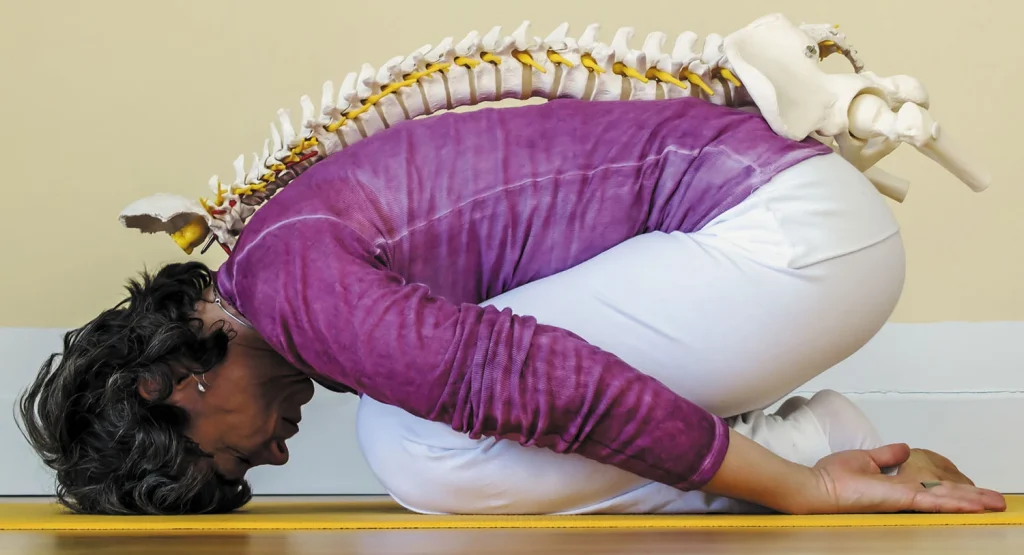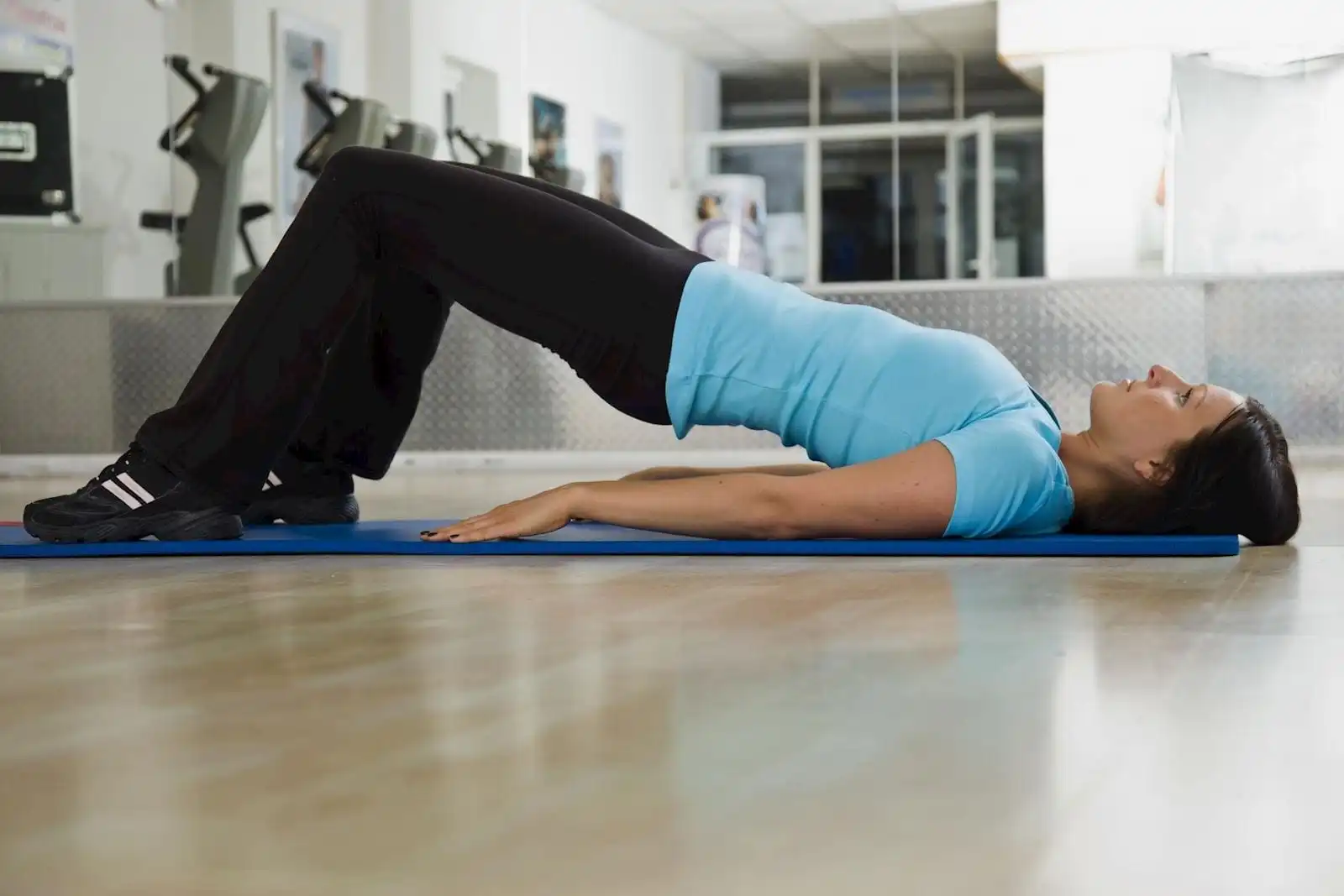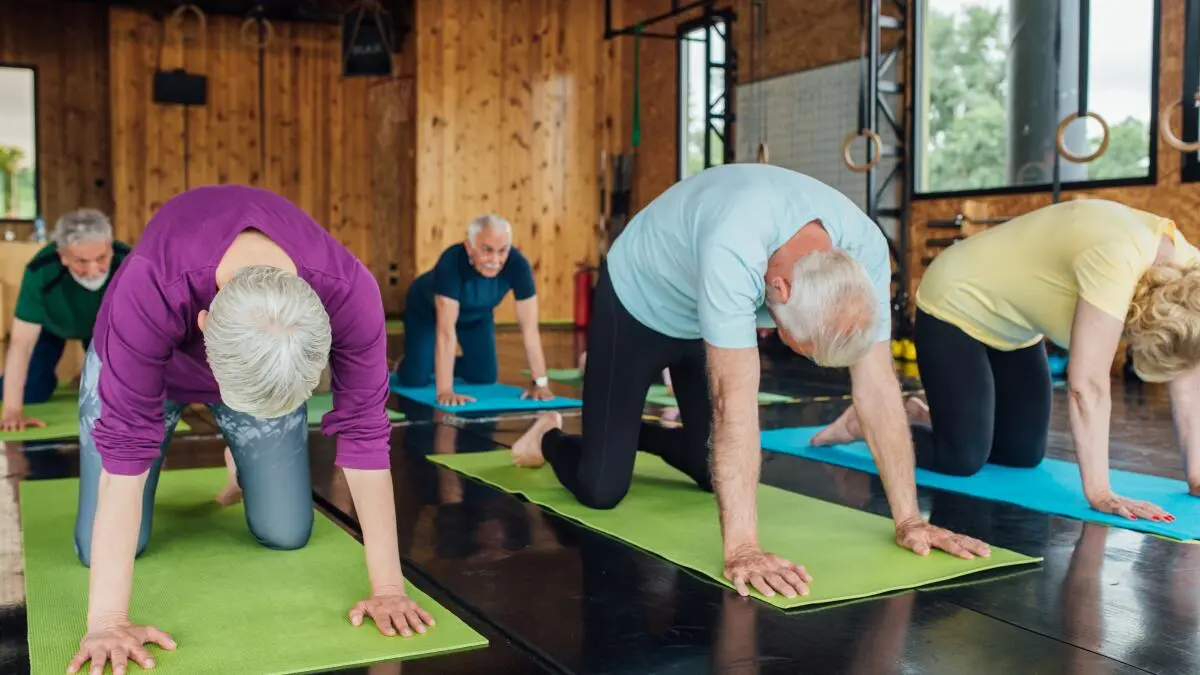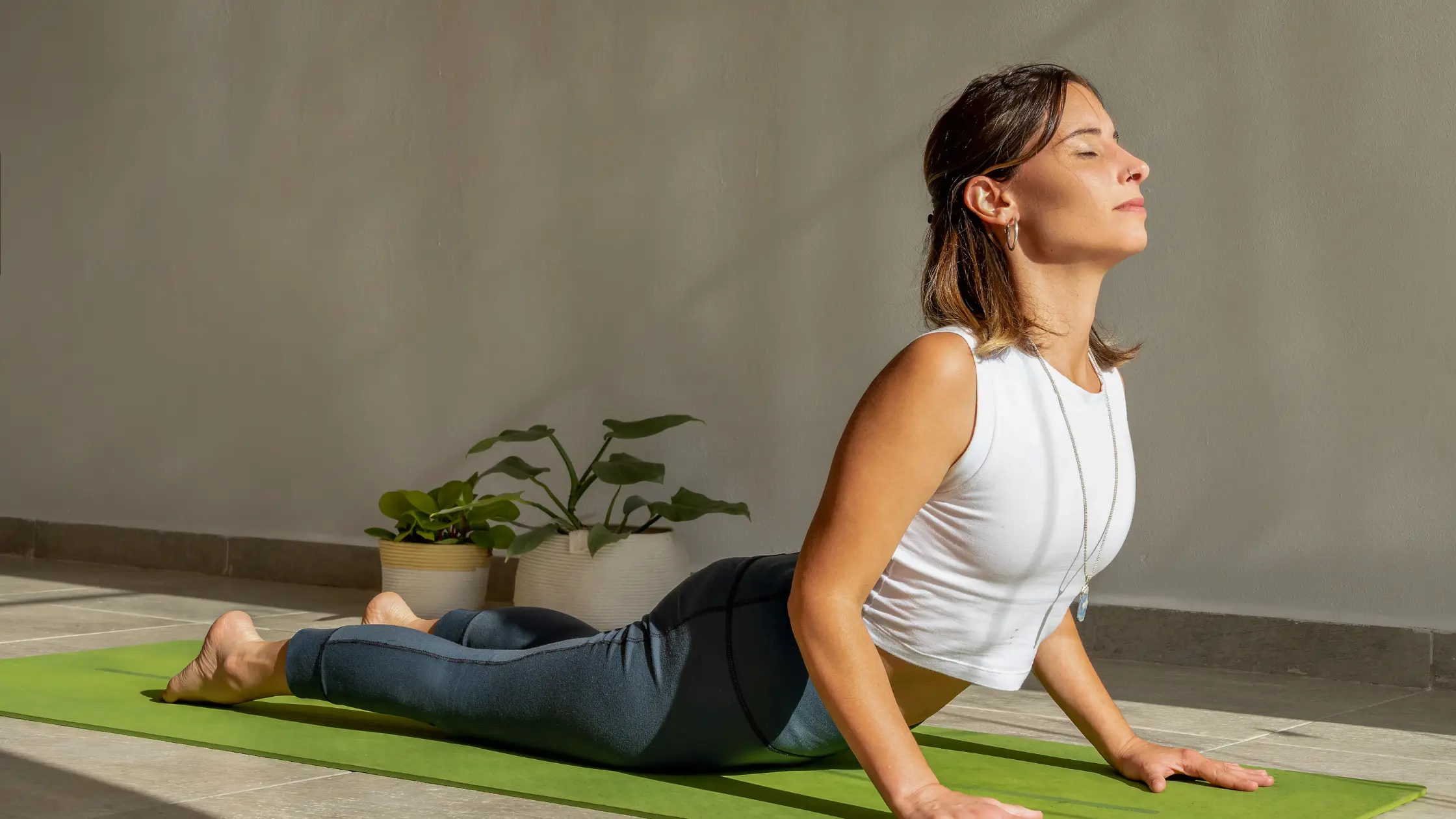
7 Best and Safe Exercise to Treating Lumbar Disc
Many people are looking for the most suitable exercise to treating lumbar disc. Exercising is necessary for people with discs; but they must be careful and follow various tips in lumbar disc exercise. On the other hand, not exercising and being inactive can also be harmful in a way; because one of the important reasons for back pain is the weakness of the muscles around the spine.
If you also suffer from back pain and are looking for the best lumbar disc exercise, join us in this article from Human Health Mag. We are going to share everything about lumbar discs and their treatment and improvement with you.
What is a Lumbar Disc?
Before introducing exercise to treating lumbar disc, it is better to first get acquainted with lumbar disc disease in detail. Your spine is made up of a series of vertebrae that help you stand or bend and move your back. Between each vertebra, there is a soft and flexible cartilage called a disc. This cartilage neutralizes the pressure on the spine. So far, we have found that the intervertebral disc is like a soft cushion that protects the back by absorbing shocks from daily activities such as walking, lifting objects or turning and does not allow any impact to be applied to the vertebrae.
Any excessive pressure, injury or weakness can cause the disc to protrude from its place and this is known as a slipped disc, herniated disc, protruded disc or the common term “lumbar disc”. A herniated disc often causes pain and discomfort, however, some people experience no pain at all, especially if the disc is not pressing on nerves. Fortunately, a herniated disc can be treated or the pain can be reduced with a series of exercises. Just as exercises to treat clubfoot, there are also exercises that can be used to treat a herniated disc, which we will introduce below.

Symptoms of a Herniated Disc
It is best to first point out that exercise to treating lumbar disc must be done with the advice of a specialist. A herniated disc can occur in the cervical and lumbar vertebrae, but the lower back is one of the common areas for a herniated disc. So be aware of pain in this area. In some cases, you will not have any symptoms. Symptoms are often due to pressure on the nerves. Common symptoms include the following:
- Numbness and tingling: In the area where the nerves of the body pass through.
- Weakness: This condition occurs in the muscles connected to the nerve, even when walking, the person suddenly feels very weak.
- Radiating pain: This pain occurs in the spine and can spread to the arms and legs. If the herniated disc is in the lower back, the pain affects the buttocks, thighs, and calves. If the herniated disc is in the cervical spine, the shoulders and arms will usually be painful. Quick movements or sneezing may cause severe pain.
Causes of Lumbar Disc Protrusion
In order to benefit from exercise to treating lumbar disc, you must first become familiar with the causes of this problem. As we said, a herniated disc occurs when the soft inner part of the intervertebral disc protrudes from its original location. The cause of this is usually gradual wear and tear of the vertebrae and overuse. This happens if you have the wrong form and posture for an activity for a long time.
On the other hand, spinal discs lose some of their water as you age. This loss of fluid makes the discs less flexible and more prone to rupture. For this reason, herniated discs are most common in men between the ages of 20 and 50. It is not always possible to identify a specific event or cause as the starting point of a herniated disc, but it often occurs when lifting objects without bending at the knees or after twisting the back when lifting a heavy object.

Is it Possible to Exercise to Treating Lumbar Disc?
Yes! A herniated disc will improve over time or with non-surgical treatment and exercise to treating lumbar disc for 9 out of 10 people. So, a herniated disc is treatable; but the treatment depends on the cause of the herniated disc and its severity. In many cases, rest, taking anti-inflammatory medications and doing physical therapy and doing exercises for the lumbar disc will help treat this problem.
To get a proper and basic exercise program for treating lumbar disc, come and consult with a specialist doctor and sports experts. They will design the best exercise program for your lumbar disc, considering your physical condition, goal and equipment. For example, some yoga exercises for seniors are helpful in improving herniated discs.
Types of Exercise to Treating Lumbar Disc
Doing exercise to treating lumbar disc has many benefits. Exercises that help improve and strengthen the back muscles and maintain their health include:
- Doing strengthening exercises: Suitable exercises to strengthen the back muscles and strengthen them include weight training, plank exercises, and back bodybuilding exercises. But before doing any exercise, it is better to consult a sports trainer to determine the right exercises for you.
- Yoga and Pilates: Yoga and Pilates help strengthen the back muscles, increase flexibility, and improve core strength. Exercises such as marching poses, which are suitable for the back, help reduce back pain and problems.
- Swimming: Swimming is a perfect exercise to strengthen the back muscles. Water makes the back muscles work naturally, this exercise is known as a harmless physical activity for the back.
- Walking and cycling: Simple activities such as walking or cycling can also help improve back muscle strength and reduce back pain and stiffness. However, it is recommended to consult your doctor before starting any exercise program.
7 Williams Exercises for Lumbar Discs
The Williams exercises, also known as the Williams lumbar flexion exercises, are a set of exercise to treating lumbar disc and therapeutic stretches designed to improve spinal flexibility. These exercises are widely used in the management and rehabilitation of low back pain and are commonly recommended by specialists to help people regain mobility, strengthen the core, and relieve discomfort in the lower back. We will explain how to perform the various Williams exercises and exercises below.
1- Posterior pelvic tilt
- Lie on your back, arms at your sides, knees bent, feet flat on the floor. Engage your abdominal muscles and slowly tilt your pelvis backward, pressing your lower back into the floor. Hold for 5 to 10 seconds. Pelvic tilt exercises strengthen the muscles that support your lower back.
2- Single Knee to Chest
- Lie on your back on the floor. Slowly pull one knee up to your chest while keeping the other leg straight. Hold this position for 5 to 10 seconds. Lower your knee and repeat the same movement with the other knee. Remember to do this exercise slowly and without any sudden movements to avoid straining your muscles or joints.
3- Double Knee to Chest
- Lie on your back with your knees bent and your feet flat on the floor. After pulling your right knee to your chest, pull your left knee to your chest and hold both knees for 5 to 10 seconds. Slowly lower one leg at a time. Knee-to-chest stretches increase lower back flexibility.

4- Sit-ups
- Do a posterior pelvic tilt and while maintaining this position, slowly lift your head and shoulders off the floor. Pause for a moment and slowly return to the starting position.
5- Hamstring Stretch
Try hamstring stretches like hamstring stretches for seniors with a straight back and relaxed shoulders. In this exercise, your toes should be pointed up and your knees should be fully extended. Slowly bring your arms and torso toward your feet, keeping your torso straight and your eyes focused forward. Reach your arms toward your toes and bring them down your legs. Avoid rounding your back. You should feel a gentle stretch in the back of your thigh (hamstrings).
6- Hip Flexor Stretch
- Place one foot in front of the other so that the left knee (front) is bent and the right knee (back) is completely straight. Bend your body forward until the left knee touches the armpit. Repeat this with the right leg forward and the left leg back. This exercise increases hip flexibility.
7- Squat
- Stand with both feet parallel to each other at shoulder width. Try to keep your body perpendicular to the ground as much as possible, eyes facing forward and feet on the ground and slowly lower your body by bending your knees. This exercise strengthens your hip muscles. If you have trouble with your balance, do this exercise with the help of a wall or a sturdy support.
Benefits of Exercise to Treating Lumbar Disc
If your doctor has prescribed exercise to treat lumbar disc, corrective exercises and physiotherapy, you can practice under his supervision and advance the treatment better and faster. When starting a physiotherapy or exercise program for lumbar disc, it is important to be patient. No one sees results overnight; because it takes time for muscles to grow and to see the benefits of spinal health. Overall, exercise for lumbar disc has many benefits for your treatment, including:
- Strengthening core muscles: The pain of a herniated disc can be worsened by increased pressure on the spine. But by strengthening the muscles of the core and back, this pressure can be reduced.
- Improved blood flow: One of the reasons why a herniated disc takes a long time to heal is limited blood flow to the spine. Regular exercise for lumbar disc, including physiotherapy, can help increase blood flow and nutrients to the disc.
- Reduce inflammation: Exercise can be a great way to reduce inflammation and reduce your pain and symptoms. Increase flexibility: Flexibility exercises like yoga and Pilates increase the flexibility of your back muscles, which can reduce pressure on your discs.
Concluding Remarks
Lumbar disc is a painful condition that affects many people. In this article, we discussed the topic of lumbar disc, its causes, symptoms and treatment. We also introduced several exercise to treating lumbar disc that you can do to fight this problem. In general, doing gentle exercises and stretching movements helps reduce pain and pressure caused by herniated or slipped discs. Strengthening the back muscles and hamstrings reduces pressure on the spine to prevent pain and recurrence of the disease.
It is best to always talk to your doctor before doing exercises to make sure that these exercises do not harm your back or cause more pain. Depending on the location of the herniated disc, your doctor will recommend the best exercise for lumbar disc depending on each person’s needs.
We’re curious to hear your thoughts! What’s your take on this topic? Comment below and join the conversation; your opinion could spark new ideas!

Frequently Asked Questions
Does Exercise Treat Herniated Discs?
One of the best treatments for herniated discs is exercise. It is important to know that exercise does not treat herniated discs itself. However, it has a great effect on treating herniated discs without surgery. If your doctor determines that your herniated disc does not require surgery and can be treated with non-surgical methods, he will definitely recommend that you do exercise.
What are the Best Exercises for Herniated Discs and Sciatica?
Exercises that are recommended to help strengthen your back and abdominal muscles and improve your back range of motion include stretching and flexibility exercises, strengthening exercises, and aerobic exercises such as walking. However, you should consult your doctor before starting any exercise program to make sure that the exercise you are considering is right for you and will not aggravate your condition.
Which Exercise is Harmful to a Herniated Disc?
Patients with a herniated disc should avoid lifting heavy objects, putting sudden pressure on the back, strenuous exercise, or any activity that causes pain. In addition, high-impact exercises such as running or martial arts are not recommended for these people.
Is Resting Good for a Herniated Disc?
Excessive rest can cause stiff joints and weaken muscles, complicating the healing process. For this reason, experts recommend resting in a comfortable position for 30 minutes and then walking or doing another activity.
Does Massage Help Relieve Back Pain?
Yes. If massage is performed correctly and by a trained person, it is beneficial for those suffering from chronic back pain and provides short-term pain relief.
